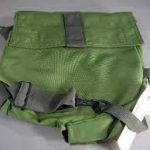Content
- 1 Features of aerated concrete houses
-
2 Options for finishing facades of aerated concrete blocks
- 2.1 Brick cladding
- 2.2 Siding
- 2.3 Vinyl siding
- 2.4 Plaster
- 2.5 Protective paint
- 2.6 Ventilated facades
- 2.7 Combination Options
- 3 Video
- 4 Photo of the facade of houses made of aerated concrete blocks
Making the front facade of the house is one of the most priority tasks that happy new settlers must solve in the shortest possible time. How will the process go and what materials will be used? The solution to this issue largely depends on the main supporting structure of the residential building and on the building materials used during the construction of the house. The opinion of experts agrees on one thing - finishing the facade of a house from aerated concrete blocks is of great importance. This is primarily due to the unique specific structure of aerated concrete.
Features of aerated concrete houses
Porous material is produced on the basis of mineral binders and siliceous aggregate, is considered one of the varieties of lightweight concrete. Not so long ago, cellular artificial material was used exclusively for arranging internal thermal insulation. As a rule, this is insulation on floor slabs, the creation of reliable thermal insulation of multilayer wall structures or thermal protection of pipelines in the cold period of time.

Recently, aerated concrete blocks have gained great popularity as a structural wall material. Buildings made of cellular concrete have the best thermal characteristics and have a number of positive qualities. Despite this, facing a house built of aerated concrete is quite difficult:
- during the construction of load-bearing structures no violations and inaccuracies are permissible, all flaws in the work will be visible even after high-quality decoration;
- The external design of the walls should be carried out in compliance with all construction technologies, taking into account the high vapor permeability of the material;
- with sufficient thickness of the external walls, there is no need for additional insulation of the structure;
- brick or stone cladding requires preliminary calculations. The foundation may not support the additional weight of the finishing material.
Dressing must be carried out after completion of all internal work. Most often, all finishing work takes place in the warm season.



Options for finishing facades of aerated concrete blocks
The design is carried out by a wide variety of finishing materials. Some types are designed exclusively for use with lightweight cellular concrete. How to finish the facade of the house from aerated concrete? Consider the most popular types of decoration today.
Brick cladding
Exterior decoration with facing bricks is rightfully considered one of the best architectural solutions. The hollow structure of the source material allows you to provide the perfect microclimate in the interior of the building, and an attractive appearance will help to create an interesting exterior of the facade. In addition, the cladding of the house is durable and resistant to external influences.
There are a fairly large number of brick processing methods and options for laying it. As a result, the building takes on a strict shape and unique design. In a single style, you can decorate the house territory and create a brick fence that encloses private households.
Most often, the facade cladding with brick is used only for multi-story buildings. If a private house consists of two floors, it makes sense to imitate brickwork with clinker tiles. The surface of the tile has the same technical characteristics as the facing brick.
All work on wall cladding with bricks is quite laborious and requires certain skills, therefore it is better to entrust the decoration of the facade to specialists.
Siding
Modern finishing material is considered the most affordable and practical way to finish buildings from aerated concrete blocks.
Siding has excellent quality characteristics:
- moisture resistance;
- incombustibility;
- light weight;
- low susceptibility to ultraviolet light;
- not subject to rotting processes;
- wide palette of colors and textures;
- simplicity in leaving.
Finishing the facade of the house from aerated concrete blocks is carried out in two ways: vertical or horizontal. Horizontal panels perfectly imitate a log wall; a vertical view of siding is often used to decorate non-residential buildings.
As a facade insulation, you can use not only soft types of mineral wool, but also solid materials, such as polystyrene or expanded polystyrene. For the decoration of aerated concrete facades, aluminum, wood, vinyl, steel or cement siding is used. The main condition for the application of a particular type should be the high quality of the finishing material. The lifetime of the facade depends on the type of siding. The most durable are considered vinyl panels.



Vinyl siding
Vinyl siding is a prefabricated set of the same type of planks that create a common canvas on the external facade of the building to be decorated. Initially, the basis of the material was a homogeneous polymer substance, over time, siding turned into a technologically advanced multilayer material made of several types of polymer masses.
Modern panels meet all the requirements for maximum comfort and safety:
- presentable appearance - the panels look harmoniously on the facades of aerated concrete buildings. A wide variety of shades and textures will help the building successfully fit into the general style of landscape design;
- excellent protection - a dense “canvas” of vinyl siding protects aerated concrete blocks from possible external influences, and negative weather conditions;
- durability and reliability of the coating. The facade finished with siding is endowed with special resistance to mechanical stress and shock;
- durability - polyvinyl chloride panels with proper care can last more than half a century;
- ease of maintenance - to care for the exterior finish you do not need to use special chemicals, just a stream of water and an ordinary soap solution.
To finish the facade of aerated concrete, it is recommended to use two-layer panels. Finishing material has an inner layer that increases the density and shape stability of the panels. To create a more reliable barrier that protects from sunlight and precipitation, panels from polyvinyl chloride is coated with a special layer that significantly increases the life of the external decorative finishes.



Plaster
Exterior decoration of aerated concrete blocks is carried out using specially developed mixtures, which include additives that prevent the absorption of moisture.
To properly plaster the facade of a house, you must follow a certain sequence of works:
- preparatory process - preliminary preparation of the surface, consisting of cleaning the decorated facade from dust, dirt. After that, the walls are primed with a composition intended for aerated concrete;
- installation of a reinforcing mesh - a modern fiberglass mesh is used or its metal counterpart with small cells. The plaster mesh is firmly attached to the vertical plane, as a result, this guarantees a good adhesion of the mortar and surface;
- plastering process - a dry plaster mixture is selected and a homogeneous mass is mixed by adding the required amount of liquid. The resulting mortar is used to create decorative plaster.
After the entire process of applying plaster has been completed, you can think about the finish of the facade. Painting of surfaces in one or several different shades will look original. You can decorate the facade with unique patterns, drawing a pattern on the plastered facade using a stencil.
Stucco facade is used only if the building is constructed from aerated concrete blocks in a mild climate zone that does not require additional wall insulation. For a more severe climate, you can create additional insulation using interior decoration. In this case, the walls are sheathed with lining, drywall or decor panels.



Protective paint
After finishing the external design of the surfaces, the facade of the house must be treated with a special hydrophobic composition that has excellent water-repellent characteristics. A thin layer of water repellent can be used for reliable protection of the decorative surface plastered facade from the external effects of natural conditions and giving it unique antistatic properties.
If decorative plaster was used in the process, then there is no need to additionally paint the surfaces; it is enough to add marble chips to the last batch of the solution.
The most economical option for finishing the facade of aerated concrete is the use of vapor-permeable putties and special paints. In an already prepared mixture, you can add color for paint of any shade.
If roughness or roughness, for example, seams or ugly connecting scars, formed on the surface during the decoration of the facade, then they need to be wiped and sanded overhangs. Then the surface of the facade is covered with another layer of paint.


Ventilated facades
The entire facade design consists of a frame for attaching heat-insulating and finishing materials. As a finishing material, various types of siding, aluminum panels or porcelain stoneware can be used.
The front facade can be decorated with metal panels containing a layer of insulation. Such a solution significantly reduces the cost of execution and installation time. Most often, the frame of ventilated facades is made of aluminum, but sometimes certain types of wood are used for this.
The wooden ventilated facade is ideal for buildings whose load-bearing structure also consists of solid wood. For buildings made of brick or gas block, more reliable structures with increased rigidity and reliability are needed.
The most popular are aluminum facades. The structures are mounted on the outer surface of the building so that the necessary remains between them space for installing an insulating layer and a small space for unhindered circulation air.


Combination Options
Today, decorators offer to decorate the plastered surface in an unusual fachwerk style. This style successfully imitates the frame structure, which first appeared in medieval Germany. To create a colorful style, contrast-painted polyurethane or wooden boards are mounted on the wall surface.
Smooth and monochrome painted surfaces are organically combined with a wide variety of finishes. Quite often, decorators distinguish a basement, corner zones, windows, a pediment and a porch. For example, plastered surfaces combine perfectly with the foundation, lined with decorative tiles or artificial stone.
The exterior finish of the aerated concrete structure will take on a unique look and amazing design if decorative PVC panels are used in conjunction with plastering. Siding can be finished basement, piers or balcony parapets.
Facing a house from aerated concrete is a fairly responsible and necessary procedure. Each of the above finishing materials has its own characteristics and disadvantages, but, despite this, any method finishes should be made only of quality material in compliance with the sequence and correctness of all finishes works.



Video
The video shows a master class on the technology of external wall decoration from aerated concrete blocks.
Photo of the facade of houses made of aerated concrete blocks
Options for finishing the facade of houses made of aerated concrete.

















-
 Parquet wax: types and rules of coating
Parquet wax: types and rules of coating
-
 DIY TV installation on the wall
DIY TV installation on the wall
-
 DIY puffs
DIY puffs
-
 Will pouches come in handy at a construction site?
Will pouches come in handy at a construction site?
-
 How to create a waterfall indoors?
How to create a waterfall indoors?
-
 4 ways to add comfort to the room
4 ways to add comfort to the room
-
 How to sew a beautiful decorative pillow?
How to sew a beautiful decorative pillow?
-
 Do-it-yourself restoration of old chairs
Do-it-yourself restoration of old chairs
-
 Brick masonry technology, material selection
Brick masonry technology, material selection
-
 Installation technology of ventilated facades
Installation technology of ventilated facades
-
 How to make facade plastering, technology
How to make facade plastering, technology
-
 Features of facade plaster for foam
Features of facade plaster for foam
New publications are published daily on our channel in Yandex. Zen
Go to Yandex. Zen





